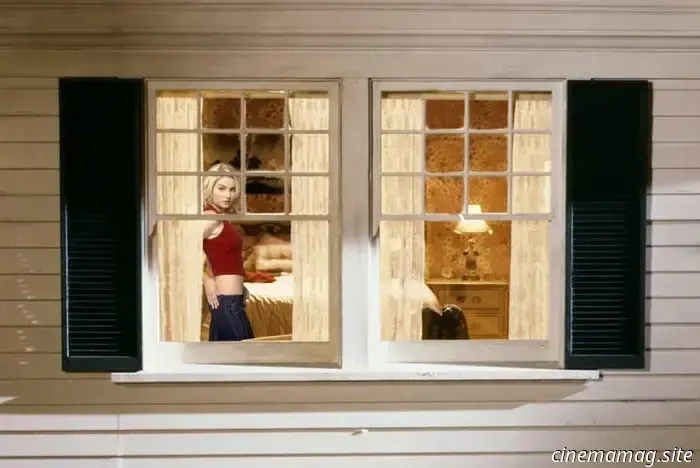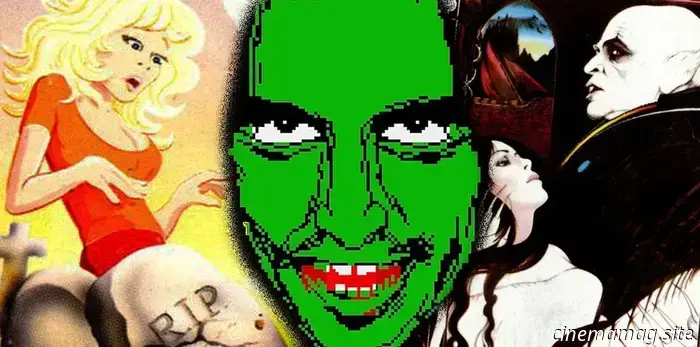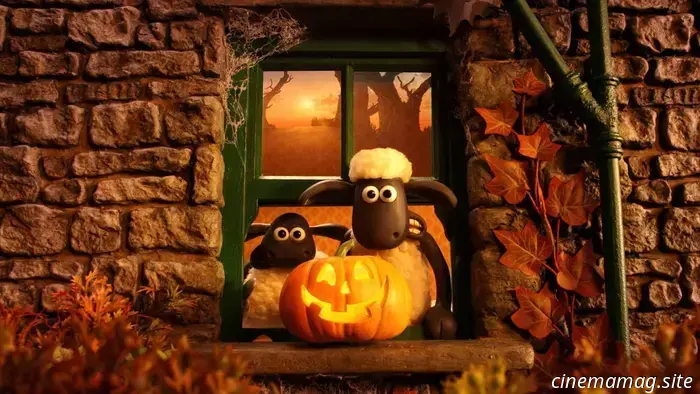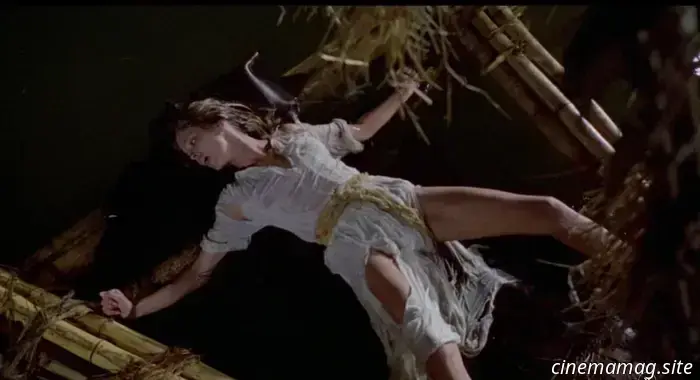
The 12 Most Voyeuristic Films We’ve Ever Seen
Here are the 12 most voyeuristic films we have ever encountered.
These films explore the desire to observe and be observed.
Let’s dive in.
But First: What Is Voyeurism?
Elisha Cuthbert in The Girl Next Door. Twentieth Century Fox. – Credit: C/O
Voyeurism can be defined as deriving pleasure from watching others or from witnessing the pain or distress of others.
Some characters in this collection embody the first type, while others reflect the second.
Why are so many filmmakers intrigued by this theme? Maybe because watching a movie resembles peering through a window into someone else's life.
Rear Window (1954)
Paramount Pictures – Credit: C/O
Still regarded as the quintessential voyeuristic film, Rear Window is frequently referenced by other movies due to its clever perspective on whether cinema itself is a form of voyeurism.
In this Alfred Hitchcock thriller, Jimmy Stewart stars as L.B. Jeffries, a news photographer who finds himself confined at home due to a broken leg. He spends his time observing his neighbors through their apartment windows, neglecting his wonderful girlfriend, Lisa Fremont (Grace Kelly, pictured above).
Rear Window is not just about crime; it also addresses a bachelor’s fears about commitment. The various people L.B. observes symbolize different life choices: Miss Torso represents the alluring yet troubled single woman, Miss Lonelyhearts has never found love, and The Salesman is the most enigmatic of all.
Peeping Tom (1960)
Credit: C/O
When discussing voyeuristic films, this is often mentioned right after Rear Window.
Directed by Michael Powell, this British horror thriller — recently added to the Criterion Collection — follows the disturbing Mark Lewis (Carl Boehm, pictured), a seemingly timid man who secretly films and murders women.
“The movies turn us into voyeurs,” critic Roger Ebert remarked in his review. “We sit in the dark, observing the lives of others. This is the deal cinema makes with us, even though most films are too polite to acknowledge it.”
Martin Scorsese noted that this film, alongside Federico Fellini’s 8½, encapsulates “everything that can be said about filmmaking, the process of dealing with film, and the blurred lines between objectivity and subjectivity.”
“8½ showcases the allure and joys of filmmaking, while Peeping Tom illustrates its aggression and how the camera intrudes,” Scorsese stated. “Analyzing both reveals much about filmmakers and those who express themselves through cinema.”
Body Double (1984)
Columbia Pictures – Credit: C/O
This quintessentially ‘80s film, a cult classic directed by Brian De Palma, pays homage not only to Hitchcock’s Rear Window but also to Vertigo.
When struggling actor Jake Scully (Craig Wasson, pictured) gets the opportunity to house-sit in a luxurious Hollywood Hills home, he discovers he can spy on a neighbor undressing through a telescope each night.
However, an act of violence prompts Scully to reassess everything, leading him into a journey through L.A.’s adult underbelly where he encounters actress Holly Body, portrayed by the captivating Melanie Griffith.
Fright Night (1985)
Credit: C/O
In this ‘80s horror classic from Tom Holland (not to be confused with the current Spider-Man actor), Fright Night features William Ragsdale as Charley Brewster, a teen obsessed with a horror TV show who becomes convinced that his debonair new neighbor (Chris Sarandon) is a vampire.
To confirm his suspicions, he recruits his favorite show's host, a former vampire hunter named Peter Vincent (Roddy McDowall). Charley's instincts prove surprisingly accurate.
This film is an enjoyable experience, merging a supernatural twist on Rear Window with effective practical effects from Richard Edlund, who had just achieved success with Ghostbusters.
The Burbs (1989)
Universal Pictures – Credit: C/O
The premise of The Burbs is akin to that of Fright Night, but it leans more towards dark comedy.
Directed by Joe Dante, the filmmaker behind Gremlins, this movie stars Tom Hanks (above) as Ray Peterson, a suburban man who suspects his new neighbors, the Klopeks, of being involved in sinister activities. His wife, Carol (Carrie Fisher), is skeptical.
As Ray becomes increasingly convinced of his theory, events spiral out of control, with most surrounding him believing he’s lost touch with reality.
The Lives of Others (2006)
Buena Vista International – Credit: C/O
Winning the Oscar for Best Foreign Language Film, this remarkable work by director Florian Henckel von Donnersmarck revisits the oppressive era of the Stasi in East Germany, a time when citizens were incentivized to report on disloyal activity.
The story follows Gerd Wiesler (Ulrich Mühe, pictured), a Stasi officer tasked with spying














Other articles
 12 Famous Actors Who Began Their Careers in Horror Films
These top-tier actors began their careers in horror films — at times, in very low-budget productions — but later achieved mainstream success.
12 Famous Actors Who Began Their Careers in Horror Films
These top-tier actors began their careers in horror films — at times, in very low-budget productions — but later achieved mainstream success.
 Spooky Retro Games to Enjoy This Halloween
Andrew Newton returns with his yearly compilation of eerie 8-bit retro game suggestions just in time for Halloween… Halloween has arrived once more, ushering in the doorbell rings and shaving foam splattered everywhere…
Spooky Retro Games to Enjoy This Halloween
Andrew Newton returns with his yearly compilation of eerie 8-bit retro game suggestions just in time for Halloween… Halloween has arrived once more, ushering in the doorbell rings and shaving foam splattered everywhere…
 Aardman introduces a spooky vibe with the teaser for Shaun the Sheep: The Beast of Mossy Bottom.
A year ahead of its Halloween 2026 premiere, Studiocanal has unveiled a first-look teaser for Aardman's Shaun the Sheep: The Beast of Mossy Bottom, marking the third eerie feature film for Shaun after...
Aardman introduces a spooky vibe with the teaser for Shaun the Sheep: The Beast of Mossy Bottom.
A year ahead of its Halloween 2026 premiere, Studiocanal has unveiled a first-look teaser for Aardman's Shaun the Sheep: The Beast of Mossy Bottom, marking the third eerie feature film for Shaun after...
 13 Deadly Animal Films That Featured Real Animals
13 Deadly Animal Films That Featured Real Animals
13 Deadly Animal Films That Featured Real Animals
13 Deadly Animal Films That Featured Real Animals
 The End of Death and Making Friends with a Giant Feature in NFMLA International Animation Program
Notable features of NewFilmmakers Los Angeles’s InFocus: International Animation included films exploring the theme of death and efforts to befriend a giant.
The End of Death and Making Friends with a Giant Feature in NFMLA International Animation Program
Notable features of NewFilmmakers Los Angeles’s InFocus: International Animation included films exploring the theme of death and efforts to befriend a giant.
 Top No Deposit Bonus Casinos - Discover Free Spins Casinos Where You Can Win Real Money Without a Deposit!
Are you interested in exploring new iGaming sites without any financial obligations? We understand your desire. Consider trying no deposit bonus online casinos, which, as their name indicates, they
Top No Deposit Bonus Casinos - Discover Free Spins Casinos Where You Can Win Real Money Without a Deposit!
Are you interested in exploring new iGaming sites without any financial obligations? We understand your desire. Consider trying no deposit bonus online casinos, which, as their name indicates, they
The 12 Most Voyeuristic Films We’ve Ever Seen
These are the most voyeuristic films we've encountered. The characters enjoy observing others — and being observed themselves.
